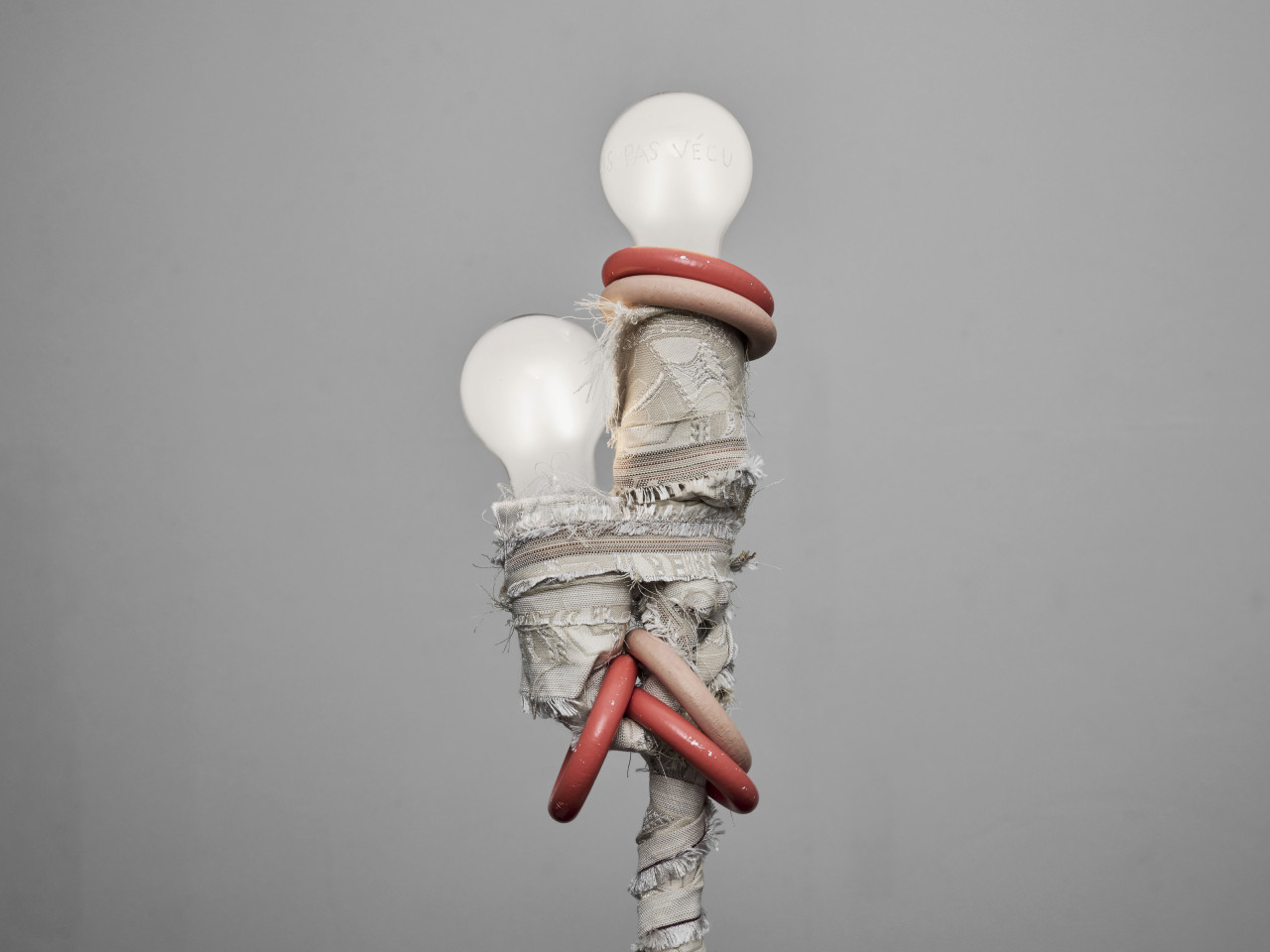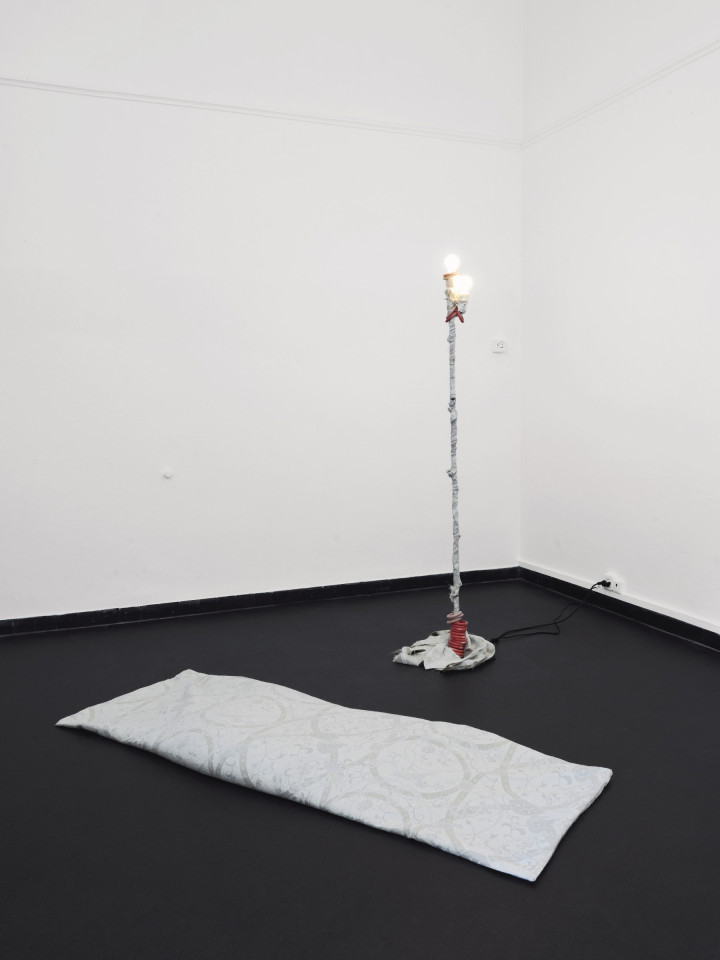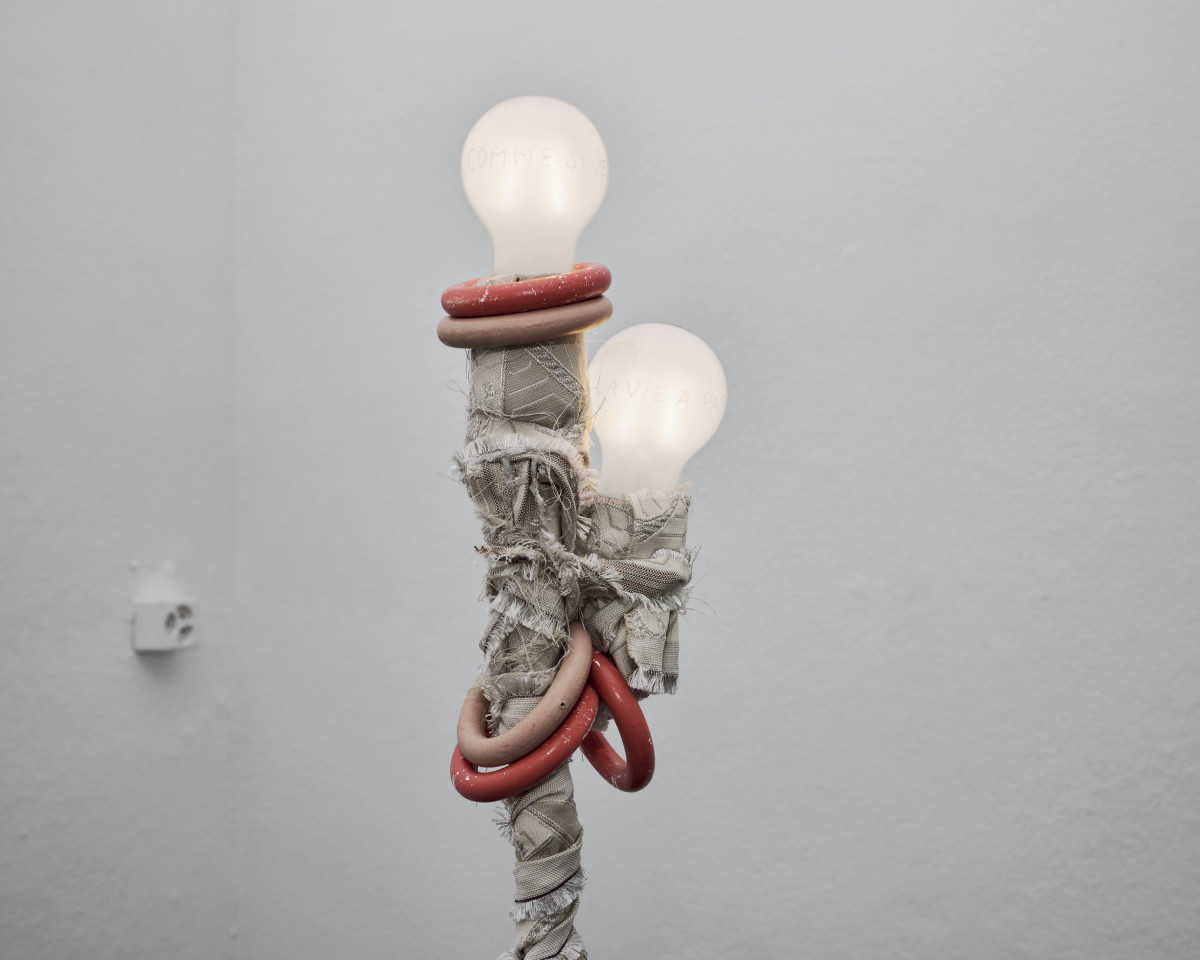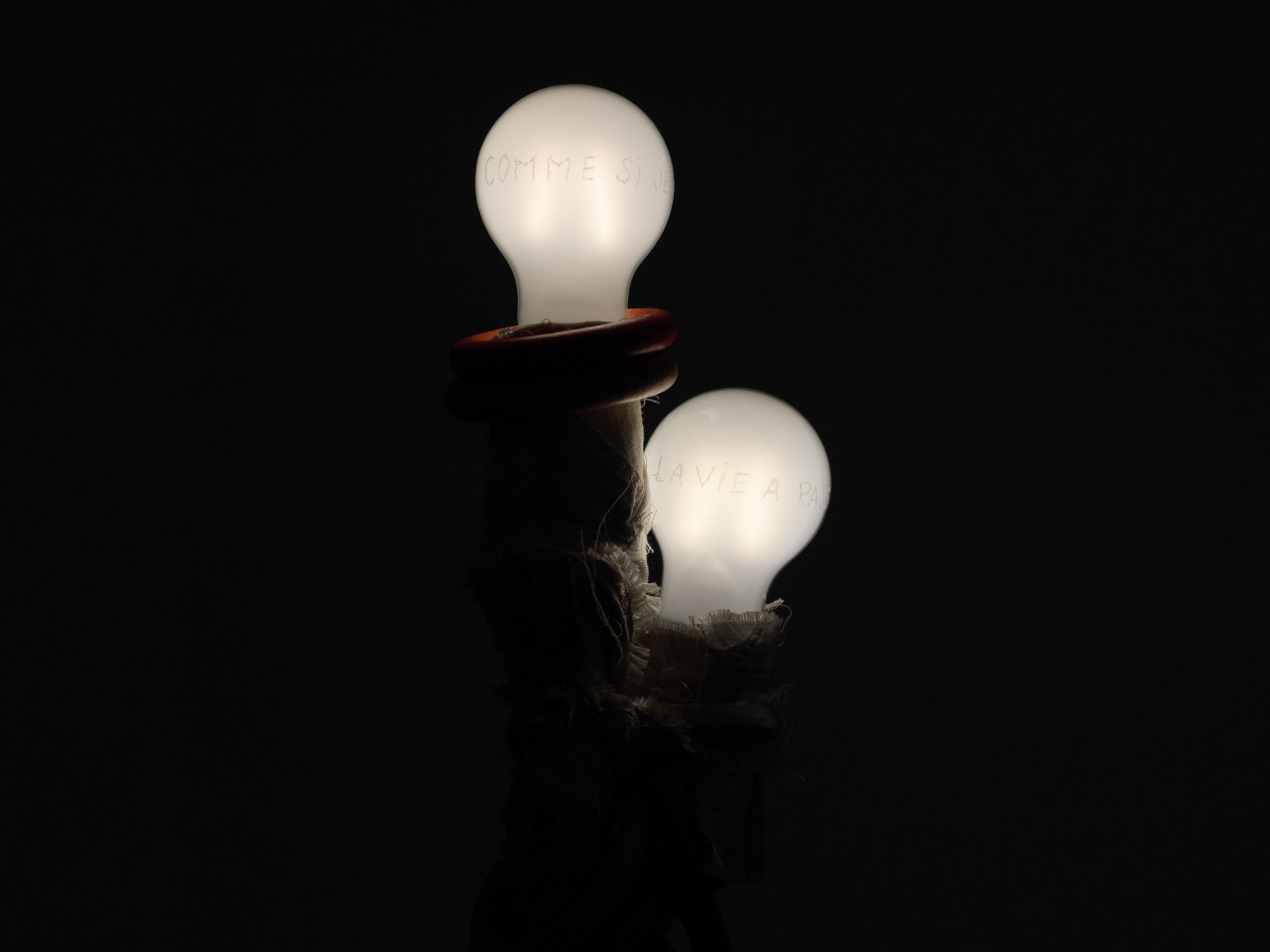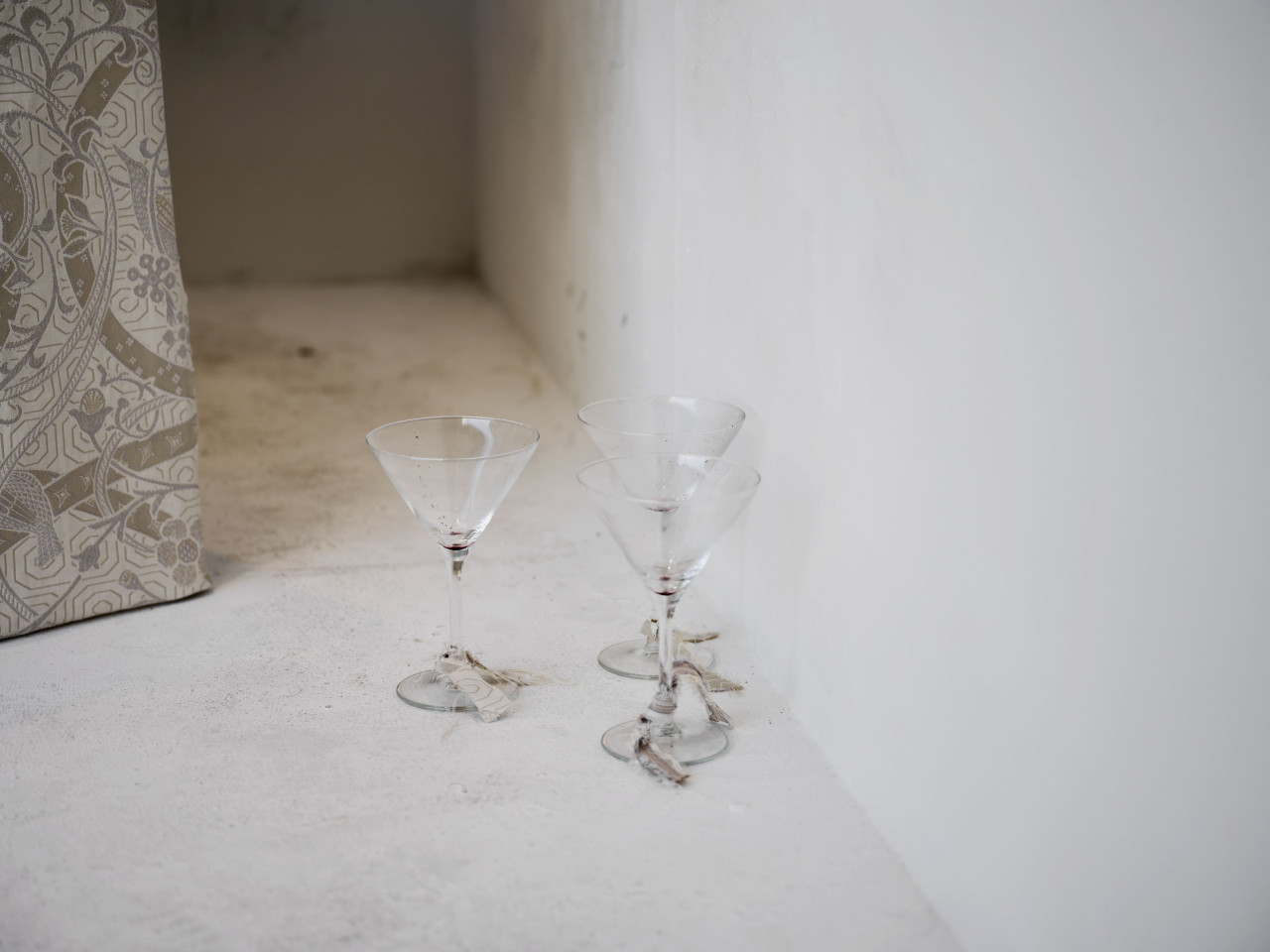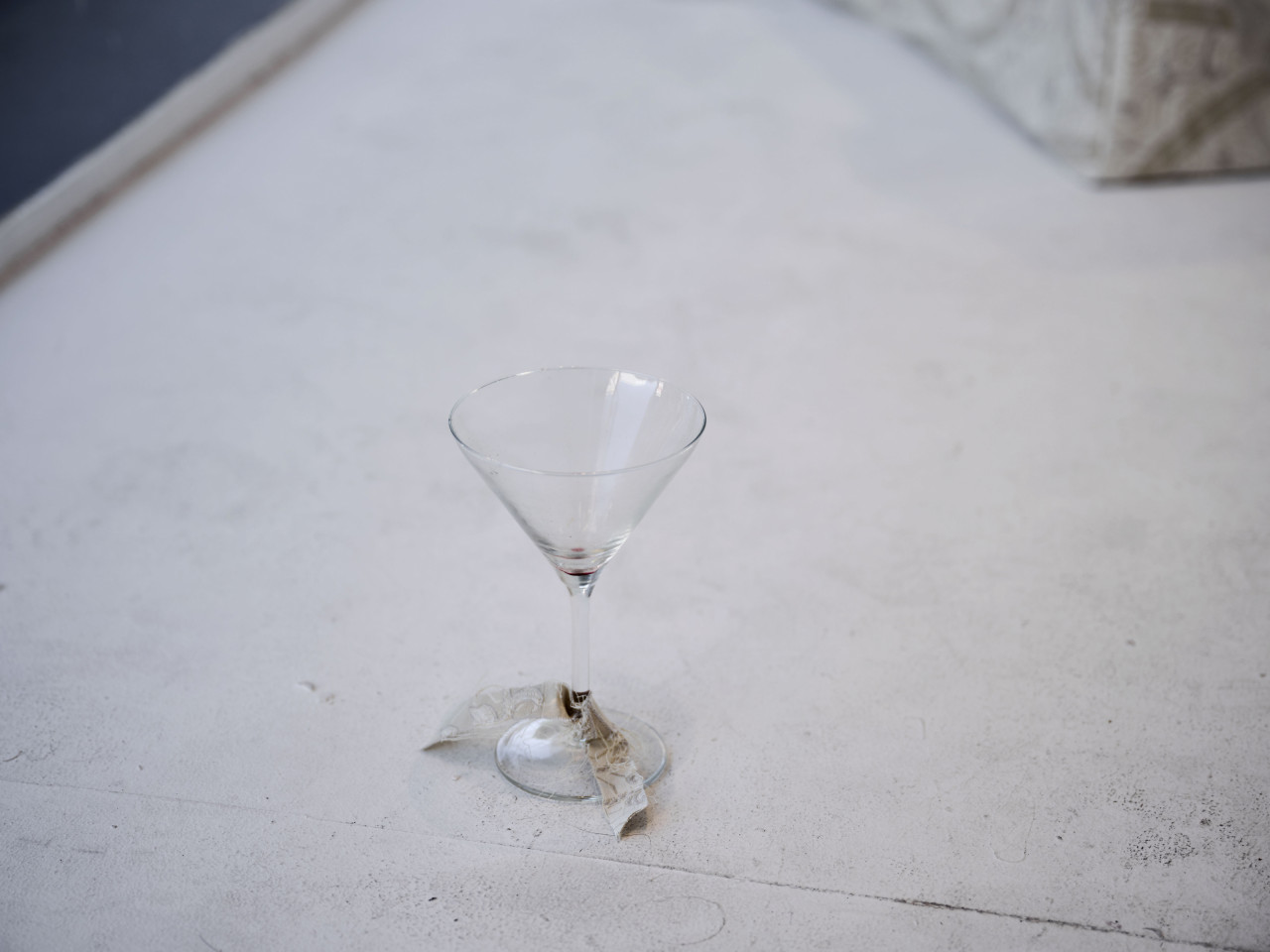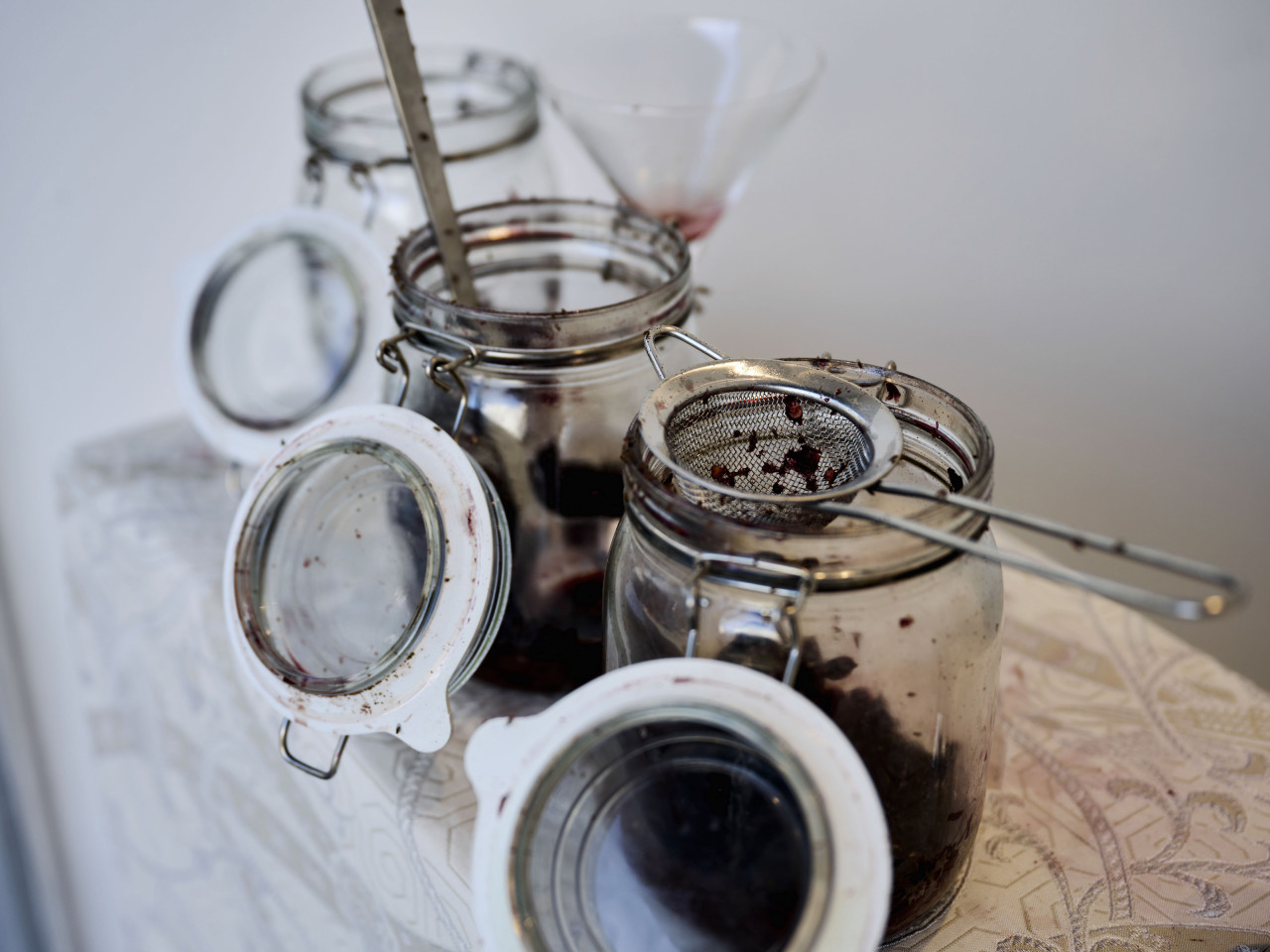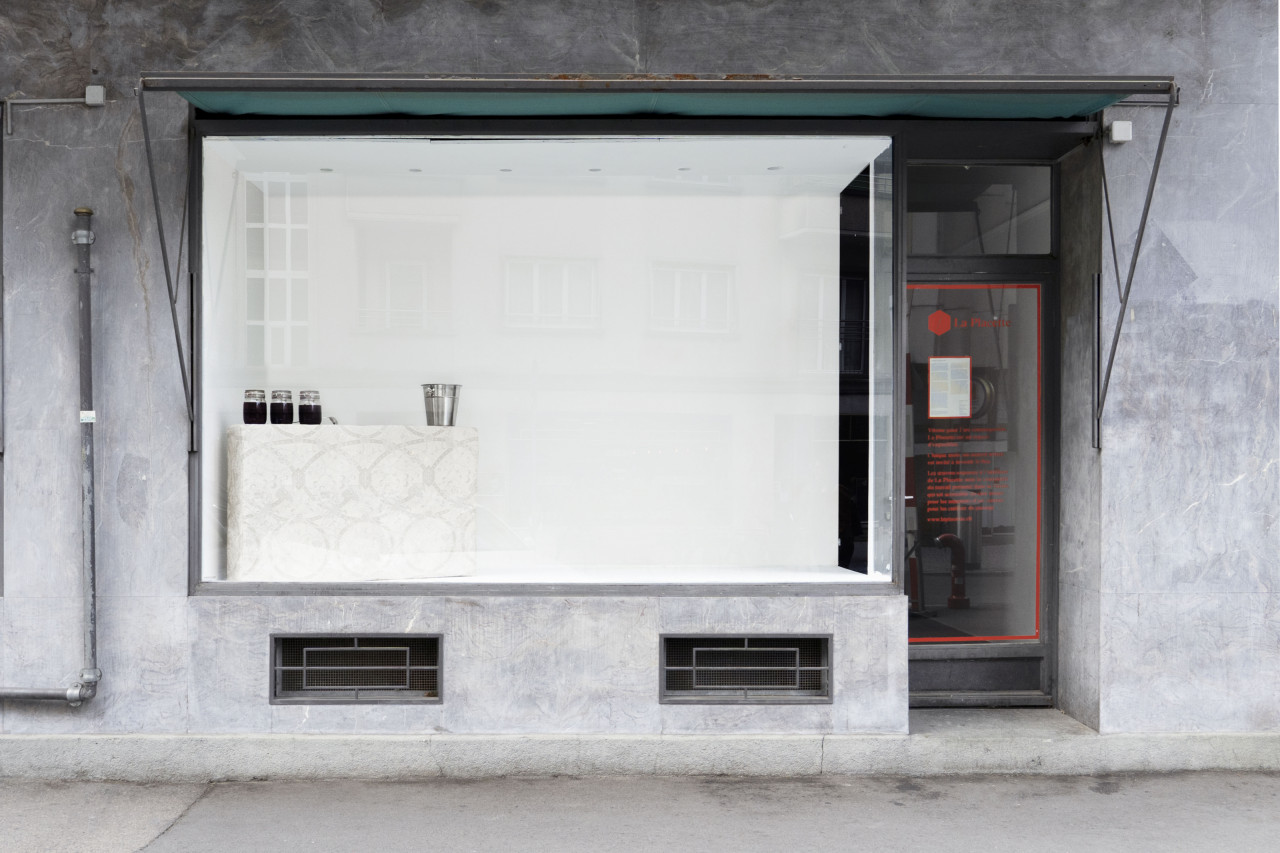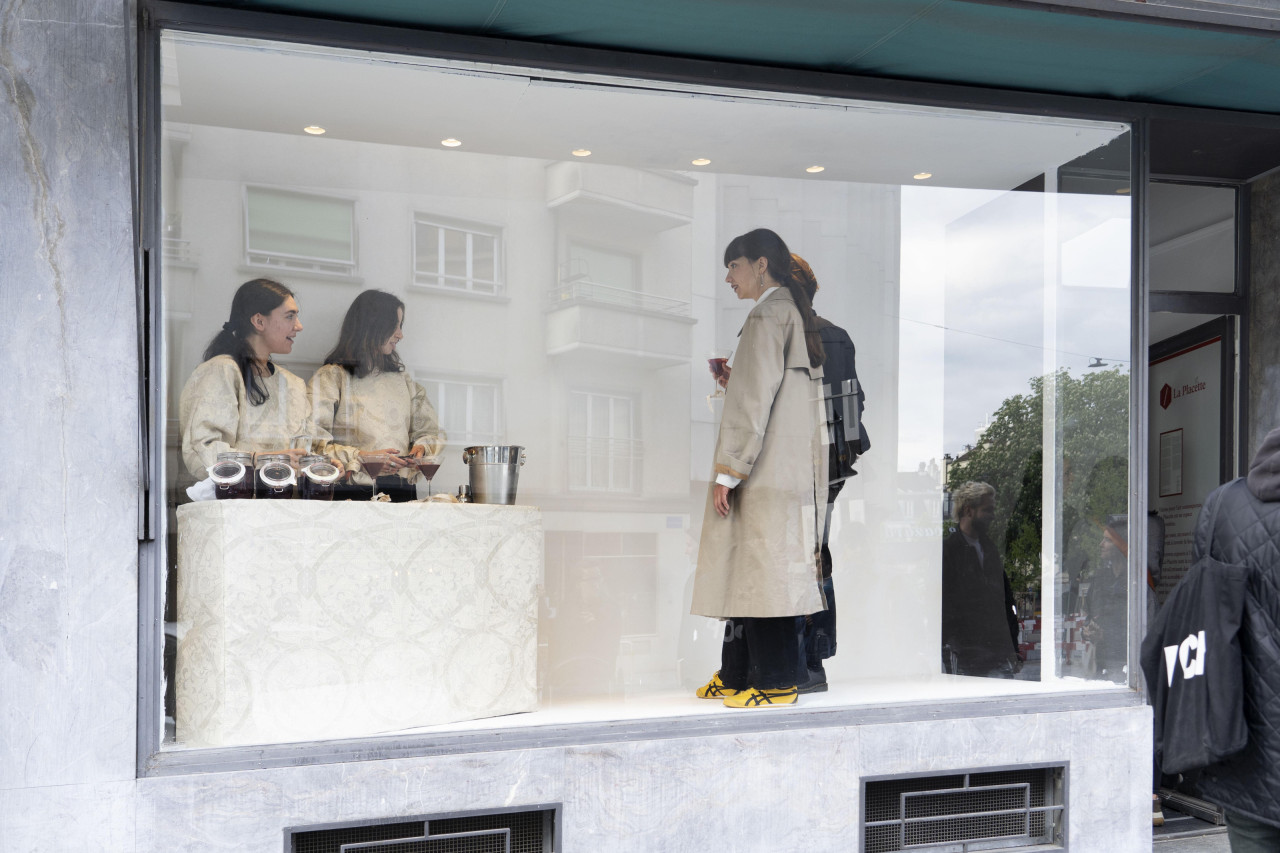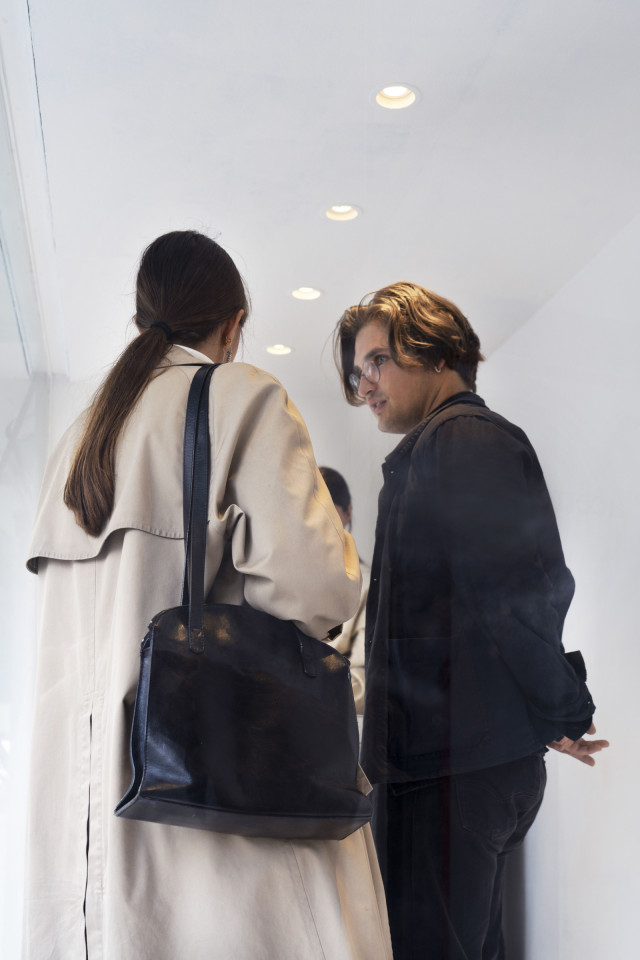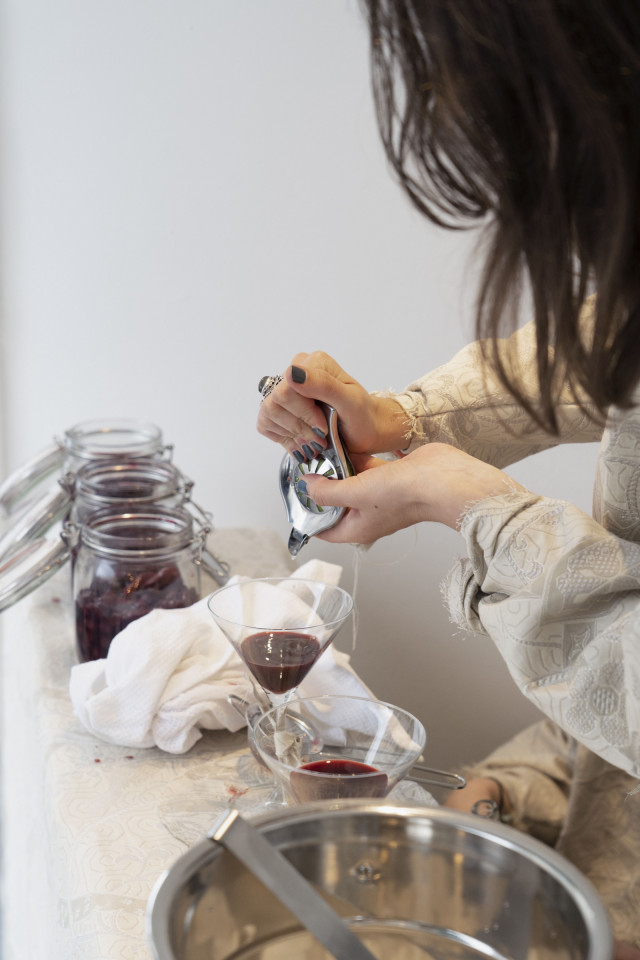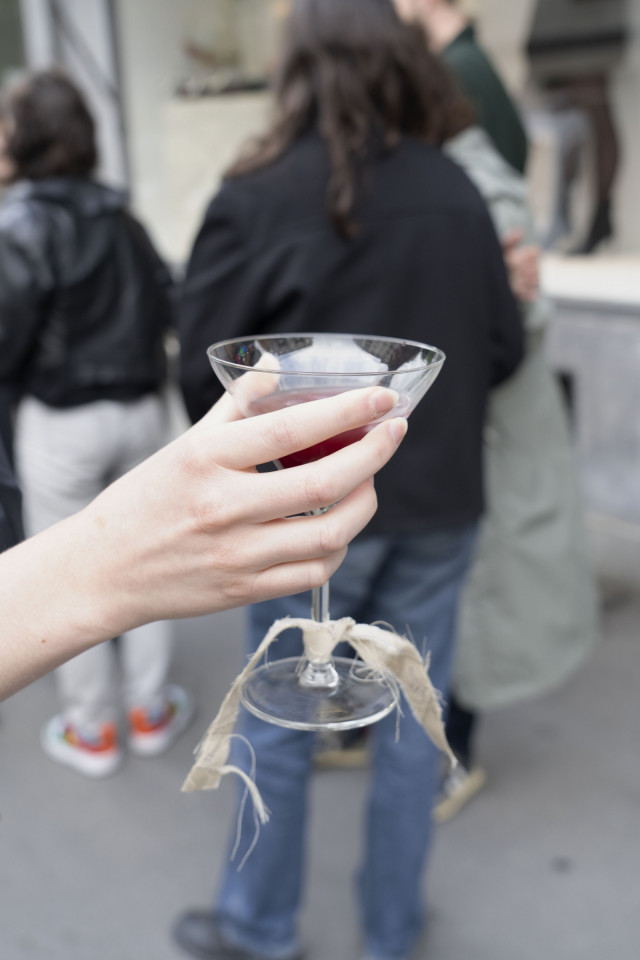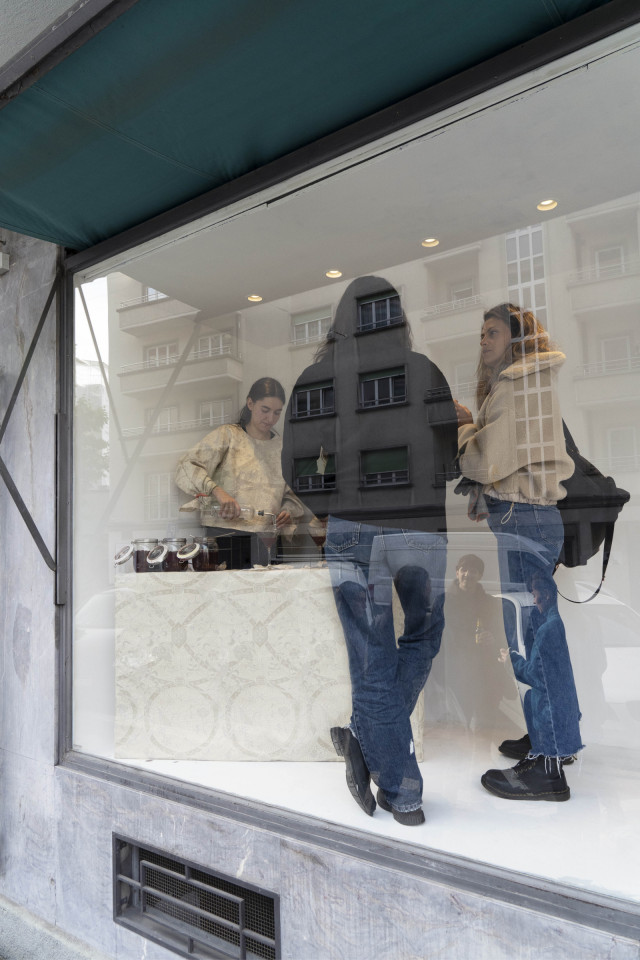« Looking at Tragédie Moyenne with The Cherry Orchard in mind, indeed, it appears that the show has been conceived by Wenger as an extension of the play’s fourth and final act and, in particular, of its 17th January 1904 staging, directed by Stanislavski. It is an extension in time and space, but also an extension of its symbolic layout, for the artist makes abstraction of the scenic elements envisioned by Chekhov and designed by Simov, intensifying their allegorical scope. If the extension in time is fairly clear, the conceptual work done on space and on the symbolic construction underlying the play is more complex.
On the one hand, the curtain that cuts diagonally across La Placette recalls the set designed by Simov for the fourth act of Chekhov’s play, where the audience, instead of sitting and watching the scene from behind an invisible wall (the “fourth wall” customary in bourgeois theatre, and still in use today), was placed in the corner of a fictional space created by rotating the stage diagonally across the room. This spatial arrangement, echoed in Wenger’s installation, was intended to problematize the notion of the fourth wall: not to break it, but rather to intensify the emotional involvement and increase the empathy of the reception. Ultimately, the scenographic device suggested a breach in the closed scheme of the bourgeois living-room, breaking out of the house’s claustrophobic interior only to transpose the scene to the equally claustrophobic exterior of the Russian world. By retracing this pattern and recalling its history, the curtain hanging across Tragédie Moyenne induces a reflection on the narrative agency of space and its structures on those who dwell in it.
On the other hand, the objects composing Wenger’s installation operate symbolically, both as metaphors and metonymies of the tropes and props envisaged by Chekov in the script. The work uniform, made of the same material of wallflower, recalls the process of identification between Firs and the couch on which he lays and dies, evoking metaphorically the objectification of the worker. Indeed, the very sofa on which moribund First lays, eventually fading and melting with it, seems to represent the fulfilment of the servant’s destiny: that of forever being an object among objects. The cushion, in Tragédie Moyenne, functions as a synecdoche of that very couch, as well as of the cherry orchard, for it contains cherry pits that have been heated before the beginning of the opening and left to cool during the evening―like the ashes of a burnt tree trunk or the dead body of Firs. By extension, it evokes the decline of aristocracy and the end of the related social system. In line with the cushion, the curtain metaphorically crystallizes social change. In fact, the curtain that comes down at the end of Chekhov’s play, preceded by the returning strident sound of a breaking violin string, is not only a curtain falling on the scene: it is the axe falling on the trunks of the cherry trees, or the cherry trees falling themselves. Ultimately, the curtain itself conjures a revolution to come: the light that comes on once the curtain falls. Tragically, Stanislavski would say; comically, Chekhov would rebut. »
Texte de Camilla Paolino présenté dans l’exposition, avril 2022. À lire en entier ici.


